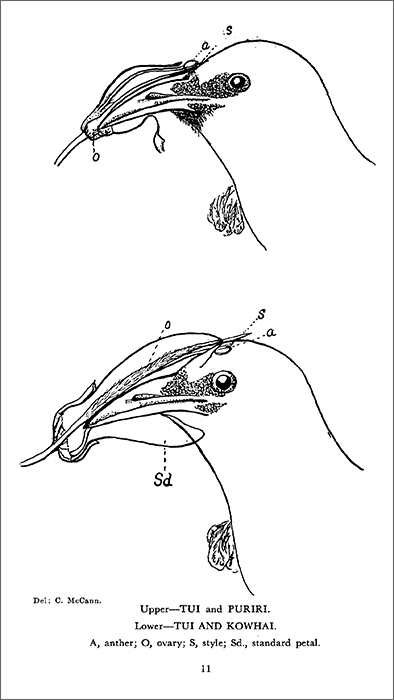
Some native plants have evolved along with tūī, and have a give-and-take relationship. Their flowers produce nutritious nectar to attract the bird, which then transfers pollen to other plants, ensuring cross-pollination. The curve and length of the flowers (pūriri, top; kōwhai, bottom) and the tūī’s bill are a good match. The anther of each flower species deposits pollen on a specific area of the tūī’s head. When it feeds on another flower of the same species, a sticky stigma-tipped style will brush the same spot, picking up pollen.
Te whakamahi i tēnei tūemi
Te Ara – The Encyclopedia of New Zealand
This item has been provided for private study purposes (such as school projects, family and local history research) and any published reproduction (print or electronic) may infringe copyright law. It is the responsibility of the user of any material to obtain clearance from the copyright holder.
Source: Charles McCann, ‘The tui and its food plants.’ Notornis 5, no. 1 (July 1952): 6–14, www.notornis.org.nz/free_issues/Notornis_05-1952/Notornis_5_1.pdf










Tāpiritia te tākupu hou